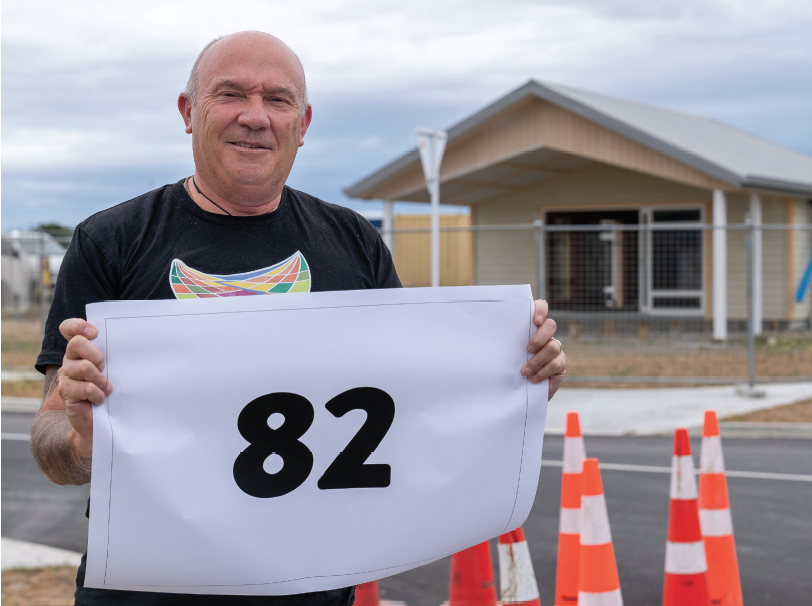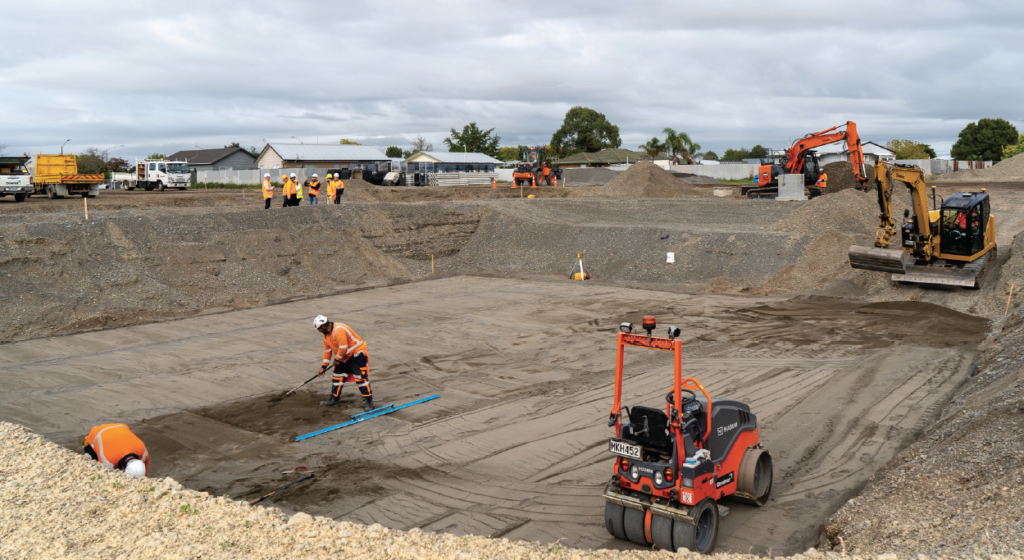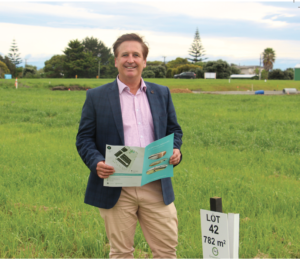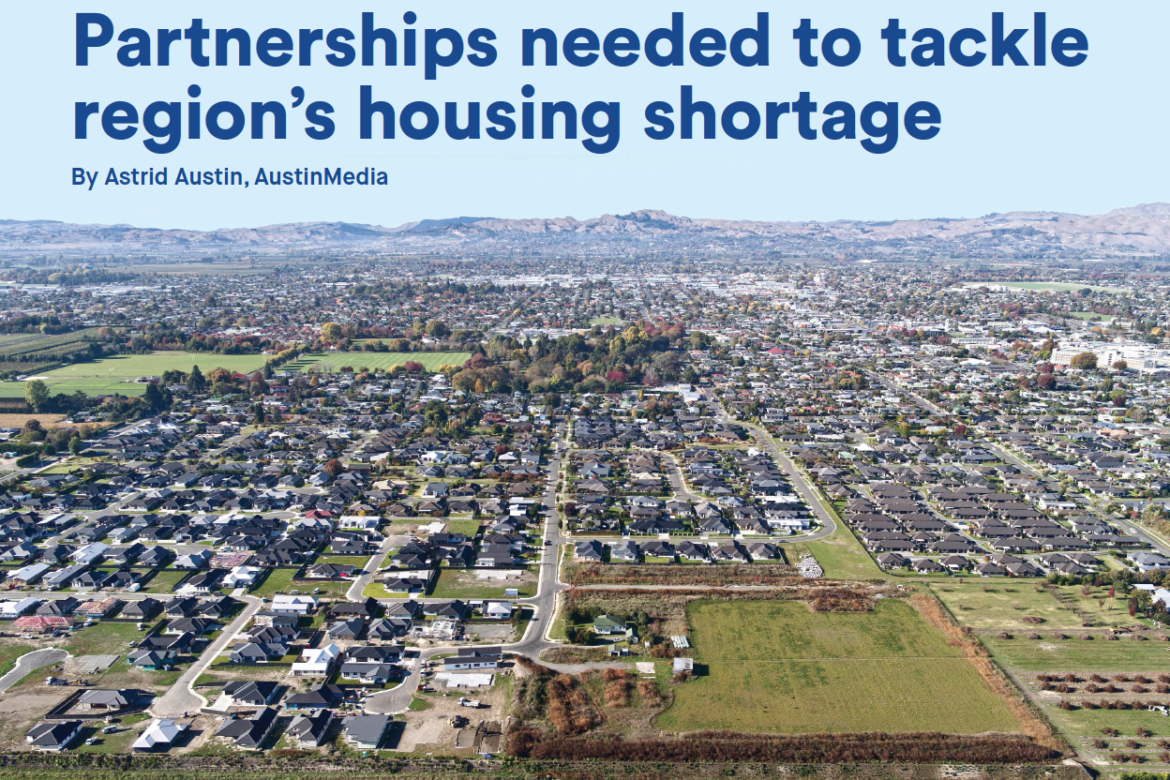Housing was once regarded as an issue for Central Government to deal with, but this is changing as it becomes a priority of the Hastings District Council, through its Hastings Place Based Housing Plan, and Hastings Medium and Long Term Housing Strategy.
The plan, launched in 2019, has seen Council partner with central government, iwi and local providers and stakeholders to deliver warm, dry, and secure housing needed for people and whānau in Hastings.
Speaking to The Profit on a driving tour of the residential development in the district, Council chief executive To’osavili Nigel Bickle is buoyed by the progress they have made, but recognises they need to continue to do more.

“It is about how you create the right solutions for place and that’s not been the focus of central government previously, and councils historically have said: ‘well our job is to make sure there is enough forward land supply’ but doesn’t go beyond that.
“So, it was quite a different place but one that [Mayor] Sandra [Hazlehurst] and councillors were willing to step into because their predominant lens is a wellbeing lens.”
The district’s housing shortage hasn’t happened overnight and has been “decades in the making” but supply that is being created is now being consumed at record levels.
“You want to avoid a situation where you run out of land because that’s where the problems really do start to compound.” They are confident in the short to medium term, but traditionally, a sensitive topic has been what land should be used for development, with growers arguing that fertile land should not be used for housing, but to grow crops. It is something the Hastings District Council is sensitive to, but also tackling head on.
A key aspect of council’s housing strategy is a residential development programme that provides certainty for developers and choice in the housing market, being staged at a rate that balances the cost to council of installing the required infrastructure against market demand.
This is taking place across Flaxmere, Frimley, Havelock North and Te Awanga, and other greenfield areas rezoned residential are going through the development process at Howard St, Parkvale, and Iona and Brookfield Rd in Havelock North.
Council has also made changes to the district plan to allow for seasonal worker accommodation to be built in the light industrial and general industrial zones at Omahu and Irongate.
“The council gets that our success long term goes to what we grow on the Heretaunga Plains, but you’ve got people saying we can’t keep doing greenfield developments on our fertile land so that’s putting pressure to do more intensification of CBD and CBD fringe suburbs.”
“If we’re not going to keep doing greenfields developments on land, we have to utilise the footprints that we’ve got and find ways to intensify housing in the CBD and CBD fringe suburbs and get more return on the land that we are bringing because we just don’t have an endless supply of land.”
While they see a way of building quality density housing in these areas with apartment living and more terraced houses, the infrastructure was not designed to accommodate that style of living and will require significant time and investment.
As a result, they have applied for $100m through the Government’s infrastructure fund.
Further up the road in Wairoa, a working group established in response to the current housing shortage in Wairoa, has found demand in the district is outpacing supply. It is a situation, that if left unchecked, is only going to get worse. The current shortage of about 150 homes could increase to 500 in the next 10 years with the expected population growth.
Wairoa District Council chief executive Kitea Tipuna says they are working as a housing enabler in partnership with local iwi and providers in relation to residential developments in the district.
While there are developments, including a 38-lot mixed housing subdivision in the pipeline, official resource consent applications have not yet been granted.
Kitea says a local housing strategy is being worked on to cater for all their community needs, and a housing co-ordinator has been appointed to work collaboratively with key stakeholders in the Wairoa region.
The one-year position will include exploring opportunities for housing initiatives, best use of resources and reporting on the progress and outcomes of the housing strategy relating to the development of social housing, Papakāinga, and affordable home ownership.
“The role includes active promotion and coordination of community collaboration by supporting iwi, government, and non- government agencies to work together within their respective sectors to achieve better outcomes for whānau.
“We know our community works best with people who recognise the unique nature of our district. It is important organisations like Kāinga Ora, differentiate between the communities they work with. Wairoa may not need whole new suburbs or high-rise apartments, but we still have a housing need and require support.”
While the housing capacity analysis suggests Napier has sufficient development capacity over the short (three years), medium (seven years) and long term (30 years) to meet demand, it has found there is significantly greater demand for housing than the market is likely to provide resulting in a lack of affordable housing options.
Napier City Council CE Dr Steph Rotarangi says housing solutions are essential.
“We have been working with our partners to develop Napier’s Spatial Picture, essentially asking what does Napier look like in the future and how do we get there today?
The result, Steph says, is a new focus on medium density residential intensification (like terraced houses or walk-up apartments) around the city’s centres and main roads.
“This has been extremely useful, to keep an eye to the future while we deal with housing pressure here and now.”
The issues facing Napier are compounded by the fact that the city boundary is small, many of the suburbs are on a flood plain and the area is vulnerable to tsunami. The city is also surrounded by highly productive plains land, which requires effective and sustainable management. Where there are hills, the infrastructure to support growth is limited and difficult to support.
“There’s also demand for new industries and businesses. We are in a period of growth and high demand for competing resources. We are fortunate to have a lot of people in Hawke’s Bay with the drive, expertise, ideas, and on-the-ground knowledge to help navigate Napier through these pressures as we set about working with our partners to solve our housing needs.”
She says that the council was working with mana whenua, a number of different developers, central government agencies and local providers to ensure appropriate housing needs are met.
“Depending on the stage of the development, some of the work we undertake is commercial in-confidence and not able to be provided. Other information and statistics are transparent and/or subject to resource consents and building consents.”
Two big projects in Napier at present are the Mission Estate development, with about 600 residential sections, and the Riverbend Road development, with 650 residential units, which is currently being assessed by the new Government fast-track process.
Steph says that by law, the council needs to provide for at least 6.5 percent residential growth.
“As set out in our Housing Development Capacity Assessment 2021, based on a medium-high population projection, an additional 2,700 houses will be needed to meet demand in Napier by 2030, particularly 1-2 bedroom and affordable housing.
In a bid to cope with the demand, the council has developed an end-to-end team of key account managers to assist developers with their consenting process to support economic development in Napier.
“This framework kicks in when developments require the delivery of multiple internal business units (i.e., planning, infrastructure). This process aims for efficiency in service as opposed to building capacity.“
She says there are also structural changes now at play at a national level including Local Government reform, RMA reform and a number of National Policy statements. There is also a new emphasis on climate change, Kāinga Ora and MHUD initiatives, and significant developments such as fast-tracking of “These are all things the council needed to evaluate whether we are structured to respond effectively.”
Steph says it is council’s role is to ensure there is sufficient, suitable land available in order to have competition in the market so that developers can respond to opportunities and build dwellings.
“Zoning land is the main area that council can influence. Developers control when and where housing opportunities are realised including whether or not a development is ‘affordable’. Council therefore has a key role to enable land availability but by itself cannot deliver housing or affordable housing to meet expected demand.”
In Central Hawke’s Bay, the District’s Mayor Alex Walker says there has been year on year growth in consenting for new residential dwellings, with a 247 percent boost in new lots being created in the 2020-21 financial year.
She describes the region as being on a journey of positivity and growth.

This is evidenced by the number of key sizeable residential developments across the district that are either underway, or shortly to break ground.
In 2020 an additional 1500 new homes in the district were forecast by 2031, with this assumption now reforecast in November 2021 to be an additional 1700 homes by 2031.
“In the short to long term, land availability is not going to be a constraint on development going forward. Analysis of resource and building consents for the last five years indicates there are up to 2,500 unbuilt sections in the pipeline – 80 percent of these are from applications since the start of 2020, including those still in the processing stage.”
There are also plans to release further areas for development.
In 2020 the council developed its Central Hawke’s Bay 2050 Integrated Spatial Plan, to promote and encourage sustainable growth and smart use of its existing infrastructure.
“As a priority project, council has been progressing towards the development of the Waipukurau South Growth Precinct, with an anticipated yield of 950 lots over the next 15+ years in the centre of Waipukurau.”
“This precinct in development with both private landowners and the Heretaunga Tamatea Settlement Trust, has been successful in the first round of Kainga Ora’s Infrastructure Acceleration Fund, as a development to ‘fast track’ implementation, and if successful the first houses can be expected in the next three years.”
The big challenge facing Central Hawke’s Bay, like the rest of New Zealand, is finding the capacity and skills in the building sector to develop these sections.
“The need for housing – including social and affordable is significant. Over 60 individual families are registered for emergency housing in the district and while the number pales to those in or on emergency housing lists in Napier and Hastings, proportionately in relation to population the number is high,” Alex says.
She says that with a growing population, the lowest unemployment rate in the region and businesses in desperate need of employees, unlocking housing is critical for the long-term success of the district.
“Council is pulling every lever available to it to support housing. This has included the establishment of the Tamatea Housing Taskforce, a housing partnership project between Te Taiwhenua o Tamatea and council. Council over the last four years has also been advocating for and identifying housing opportunities with both Kainga Ora and Ministry of Housing and Urban Development, which has seen a site in Waipukurau purchased for housing by Kainga Ora and eight new homes being purchased in the district by Kainga Ora in late 2021.”
In the past six years, Greenstone Land Developments has supplied 73 per cent of the finished residential section supply for Havelock North and Hastings, and currently has about 300 sections in the pipeline.
Managing Director Tim Wilkins says they have seen a significant increase in demand in the last two years due to an influx of people moving to the region and a natural increase in population which has brought about a lack of supply.

“We can keep up with the demand at the moment, but there are resource problems at local government level in the processing of these developments though to title.”
Tim says the biggest issue facing developers in the region in the future is the land resource required for development.
“There’s a real conflict between land that’s very valuable for horticultural export purposes that shouldn’t be put into development and where development should occur going forward as it is critical to provide housing to all sectors for our growing population.
And intensification in the CBD is not in “demand”, he says.
“The reality is that people don’t want to live in apartments, and they don’t want to live on very small 300m2 sections. It might stack up financially in major towns in New Zealand, but certainly not provincial towns in New Zealand.”



